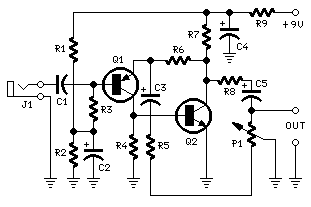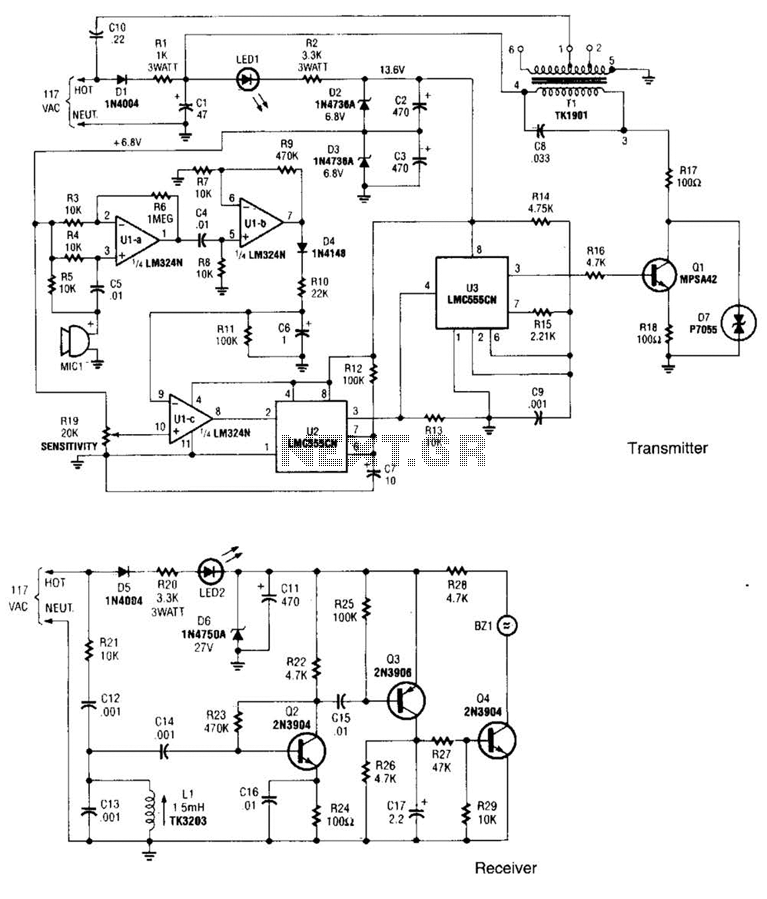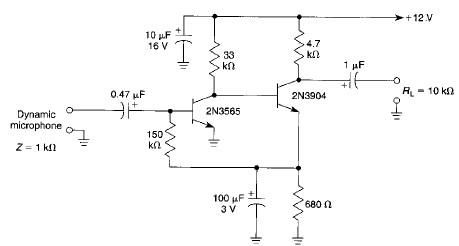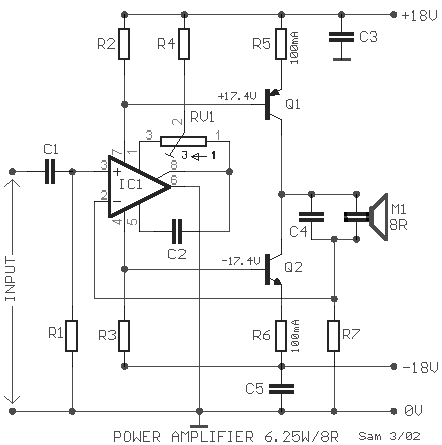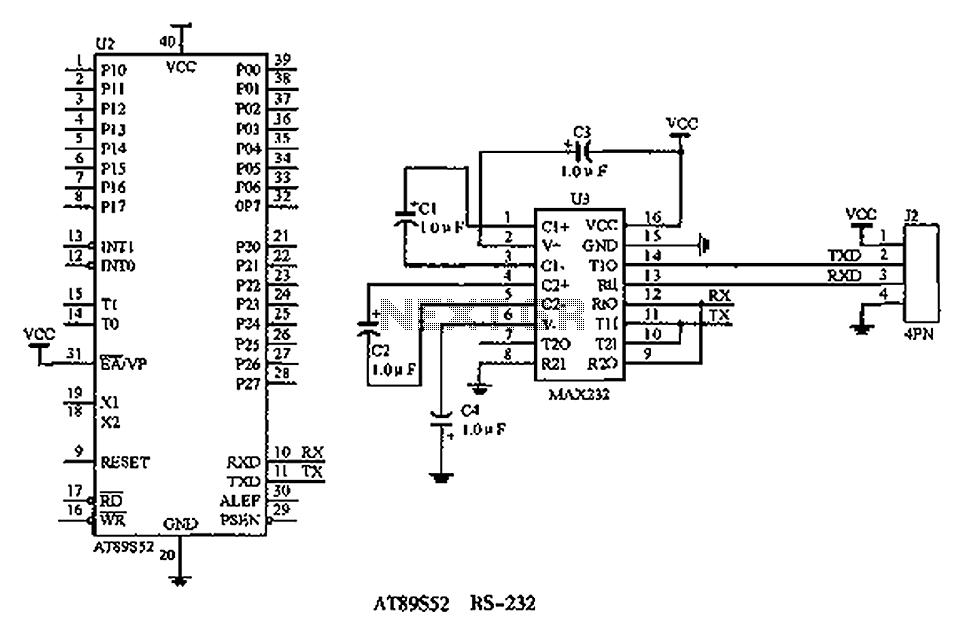
Audio DA converter and amplifier circuit
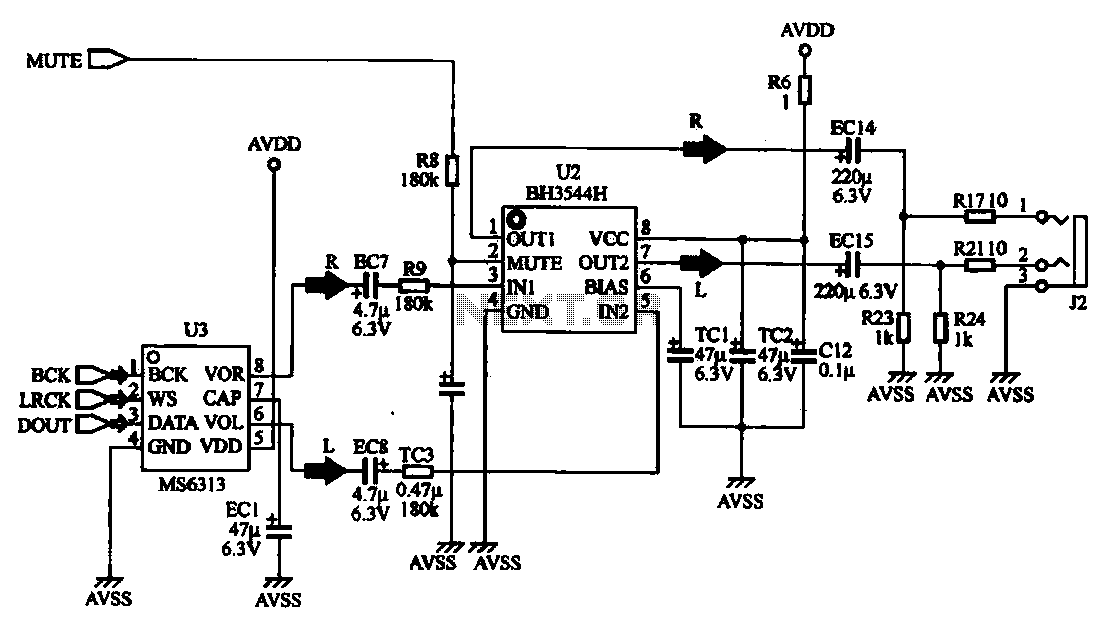
The MP4 audio circuitry consists of audio D/A converters and an audio amplifier combination circuit. This design features a straightforward circuit layout, making it suitable for integration into compact MP4 digital devices.
The MP4 audio circuitry is designed to efficiently convert digital audio signals into analog form while amplifying the output for playback through speakers or headphones. The core components of this circuit include digital-to-analog converters (D/A converters), which are responsible for translating the digital audio data stored in MP4 files into an analog signal. This conversion process is critical for ensuring high-fidelity sound reproduction.
Following the D/A conversion, the analog signal is fed into an audio amplifier. The amplifier boosts the signal strength to drive the output devices effectively. The choice of amplifier can significantly influence the sound quality, so it is essential to select one that minimizes distortion and maximizes dynamic range.
The simplicity of the circuit design is a key advantage, particularly for small MP4 digital machines. A compact layout not only saves space but also reduces manufacturing costs and improves reliability. This design approach typically incorporates surface mount technology (SMT) components, which further aids in miniaturization.
In summary, the MP4 audio circuitry integrates D/A converters and amplifiers in a compact format, making it well-suited for small digital audio devices. It emphasizes efficiency, sound quality, and space-saving design, which are critical factors in the competitive landscape of portable audio technology.MP4 audio circuitry is shown, it is by the audio D/A converters and audio amplifier combination circuit, which has a body product circuit simple, suitable for use in small MP4 digital machines.
The MP4 audio circuitry is designed to efficiently convert digital audio signals into analog form while amplifying the output for playback through speakers or headphones. The core components of this circuit include digital-to-analog converters (D/A converters), which are responsible for translating the digital audio data stored in MP4 files into an analog signal. This conversion process is critical for ensuring high-fidelity sound reproduction.
Following the D/A conversion, the analog signal is fed into an audio amplifier. The amplifier boosts the signal strength to drive the output devices effectively. The choice of amplifier can significantly influence the sound quality, so it is essential to select one that minimizes distortion and maximizes dynamic range.
The simplicity of the circuit design is a key advantage, particularly for small MP4 digital machines. A compact layout not only saves space but also reduces manufacturing costs and improves reliability. This design approach typically incorporates surface mount technology (SMT) components, which further aids in miniaturization.
In summary, the MP4 audio circuitry integrates D/A converters and amplifiers in a compact format, making it well-suited for small digital audio devices. It emphasizes efficiency, sound quality, and space-saving design, which are critical factors in the competitive landscape of portable audio technology.MP4 audio circuitry is shown, it is by the audio D/A converters and audio amplifier combination circuit, which has a body product circuit simple, suitable for use in small MP4 digital machines.
